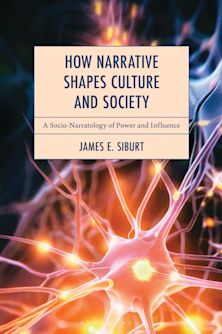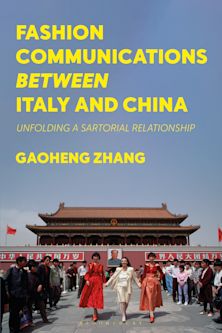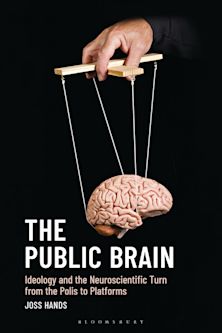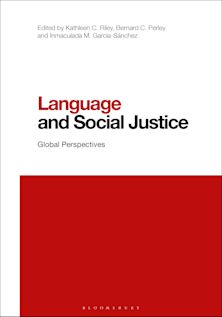- Home
- ACADEMIC
- Anthropology
- Cultural Anthropology
- Cinderella Story
Cinderella Story
A Scholarly Sketchbook about Race, Identity, Barack Obama, the Human Spirit, and Other Stuff that Matters
Cinderella Story
A Scholarly Sketchbook about Race, Identity, Barack Obama, the Human Spirit, and Other Stuff that Matters
You must sign in to add this item to your wishlist. Please sign in or create an account
Description
Cinderella Story is an experimental autoethnography that explores critical racial issues in America through the media of language and images. Rolling asks, How do words and images-involving stories and paradigms, past and future, perceptions of beauty and ugliness-become flesh? How are they done and undone? In this supple and complex narrative, the author peers deeply into his own life and attitudes, and into the racial images and ideas made explicit by American history as a whole, to sort out fact from fiction in new and ingenious ways.
Table of Contents
Chapter 2 Episode One: Borderlines
Chapter 3 Episode Two: Homelessness
Chapter 4 Episode Three: Origins
Chapter 5 Episode Four: Breech Births and Cinderella Endings
Chapter 6 Episode Five: Monsters Deconstructed
Chapter 7 Episode Six: Figuring Myself Out
Chapter 8 Episode Seven: Messing around with Identity Constructs
Chapter 9 Episode Eight: Disruptions
Chapter 10 Episode Nine: Secular Blasphemy
Chapter 11 Episode Ten: Propaganda
Chapter 12 Episode Eleven: Invisibility and In/di/visuality
Chapter 13 Episode Twelve: The Meeting
Chapter 14 Episode Thirteen: Self-Portrait, with Stern Resistance
Chapter 15 Episode Fourteen: (Re)Appearances
Chapter 16 Episode Fifteen: Self Portrait, with Backlighting
Chapter 17 Episode Sixteen: The One-Drop Rule
Chapter 18 Episode Seventeen: Self-Portrait, with Possibilities
Chapter 19 Episode Eighteen: Epilogue, with New Story Values
Product details
| Published | Mar 16 2010 |
|---|---|
| Format | Ebook (Epub & Mobi) |
| Edition | 1st |
| Extent | 228 |
| ISBN | 9780759119420 |
| Imprint | AltaMira Press |
| Series | Crossroads in Qualitative Inquiry |
| Publisher | Bloomsbury Publishing |
About the contributors
Reviews
-
In Cinderella Story, James Haywood Rolling, Jr. introduces us to an intricate collage of embodied experiences and aspirations, hopes and redemptions, afflictions and possibilities. Wow, what a fantastic visual read! With every turn of the page you will imagine Rolling sketching meaningful narratives of Black lives with broad strokes and fine lines, and we are left with an intellectually nuanced iteration of a textured imagination of Blackness that many of us will resonate with so deeply so as to consider it Truth. Perhaps what is most refreshing in this book is Rolling's self-reflection as a Black male. Privileging the reader with self-portraits drawn by the author, Rolling reminds us without cliché that each of our lives is a tremendously personalcanvas. Unlike most books on identity that theorize without location, Rolling invites us to see identities as real transformative spaces we inhabit daily. He helps us to remember that just like he and his family, we all not only come from a place with aphysical address like 1260 Lincoln Place, but we also continue to inhabit spaces and places that are designed to offer a profound sense of security, agency, self, position, and most of all home. In this book, Rolling unabashedly takes on issues of race a
Ronald L. Jackson II, professor of media, race & identity, and author of African American Communication: Exploring Identity and Culture
-
James Haywood Rolling, Jr.'s Cinderella Story is a powerful, richly nuanced, evocative work; a stunning and brilliantly innovative pedagogical and theoretical intervention. This new book provides ground zero-the starting place for the next generation oftheorists who want to write their way through and across the theoretical, methodological, and interpretive implications that result when voice, identity, family, presence, and writing are made problematic. A stunning accomplishment. This brilliant inter-textual model of performance autoethnography charts new territories of inquiry.
Norman K. Denzin, University of Illinois at Urbana-Champaign
-
It is said that the past can't be changed, but that history can. In his rich rendering of the limits imposed on African American individuality, James Haywood Rolling, Jr. reveals radical new ways to see beneath socio-political history using an educational process of re-visioning and re-interpreting human identity. Drawing on his remarkable talents as a scholar, cultural critic, artist, and teacher, Rolling positions the arts as the form of inquiry most able to open up the learning spaces needed to respond critically and creatively to the fluid times of Obama nation. Rolling is a thinker who acknowledges that educational policy and practice of the most profound kind is always a work-in-progress that blurs lines as it erases and enables at the same time.
Graeme Sullivan, Teachers College, Columbia University
-
James Haywood Rolling, Jr.'s Cinderella Story is a powerful, richly nuanced, evocativework; a stunning and brilliantly innovative pedagogical and theoreticalintervention. This new book provides ground zero-the starting place for the next generation of theorists who want to write their way through and across the theoretical, methodological, and interpretive implications that result when voice, identity, family, presence, and writing are made problematic. A stunning accomplishment. This brilliant inter-textual model of performance autoethnography charts new territories of inquiry.
Norman K. Denzin, University of Illinois at Urbana-Champaign
-
In Cinderella Story, James Haywood Rolling, Jr. introduces us to an intricate collage of embodied experiences and aspirations, hopes and redemptions, afflictions and possibilities. Wow, what a fantastic visual read! With every turn of the page you will imagine Rolling sketching meaningful narratives of Black lives with broad strokes and fine lines, and we are left with an intellectually nuanced iteration of a textured imagination of Blackness that many of us will resonate with so deeply so as to consider it Truth. Perhaps what is most refreshing in this book is Rolling's self-reflection as a Black male. Privileging the reader with self-portraits drawn by the author, Rolling reminds us without cliché that each of our lives is a tremendously personal canvas. Unlike most books on identity that theorize without location, Rolling invites us to see identities as real transformative spaces we inhabit daily. He helps us to remember that just like he and his family, we all not only come from a place with a physical address like 1260 Lincoln Place, but we also continue to inhabit spaces and places that are designed to offer a profound sense of security, agency, self, position, and most of all home. In this book, Rolling unabashedly takes on issues of race and representation, but does so in a way that forces us to not only grapple with how race contains us, but how despite its social apparatus we might be transformed.
Ronald L. Jackson II, Author of Scripting the Black Masculine Body
































